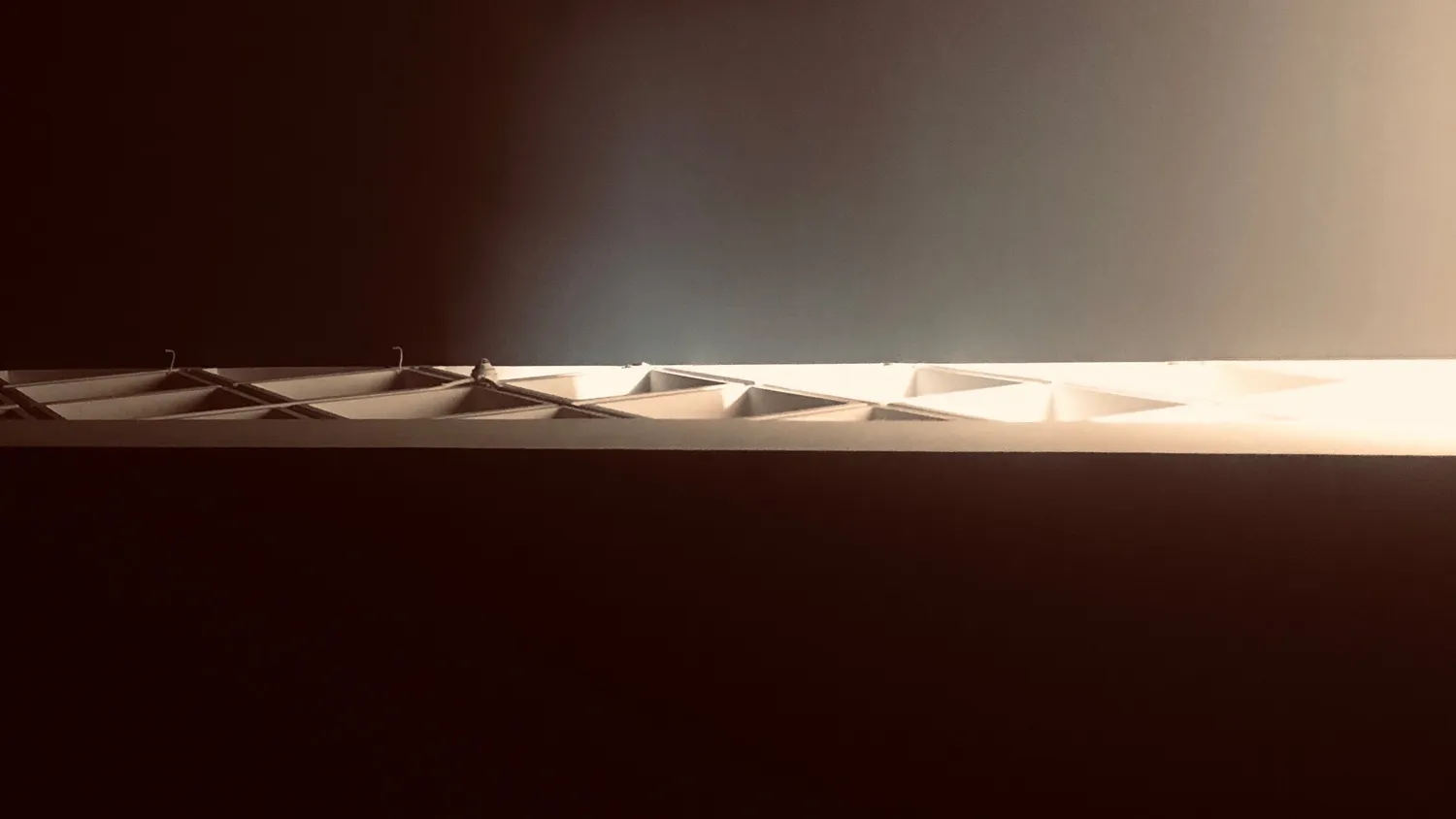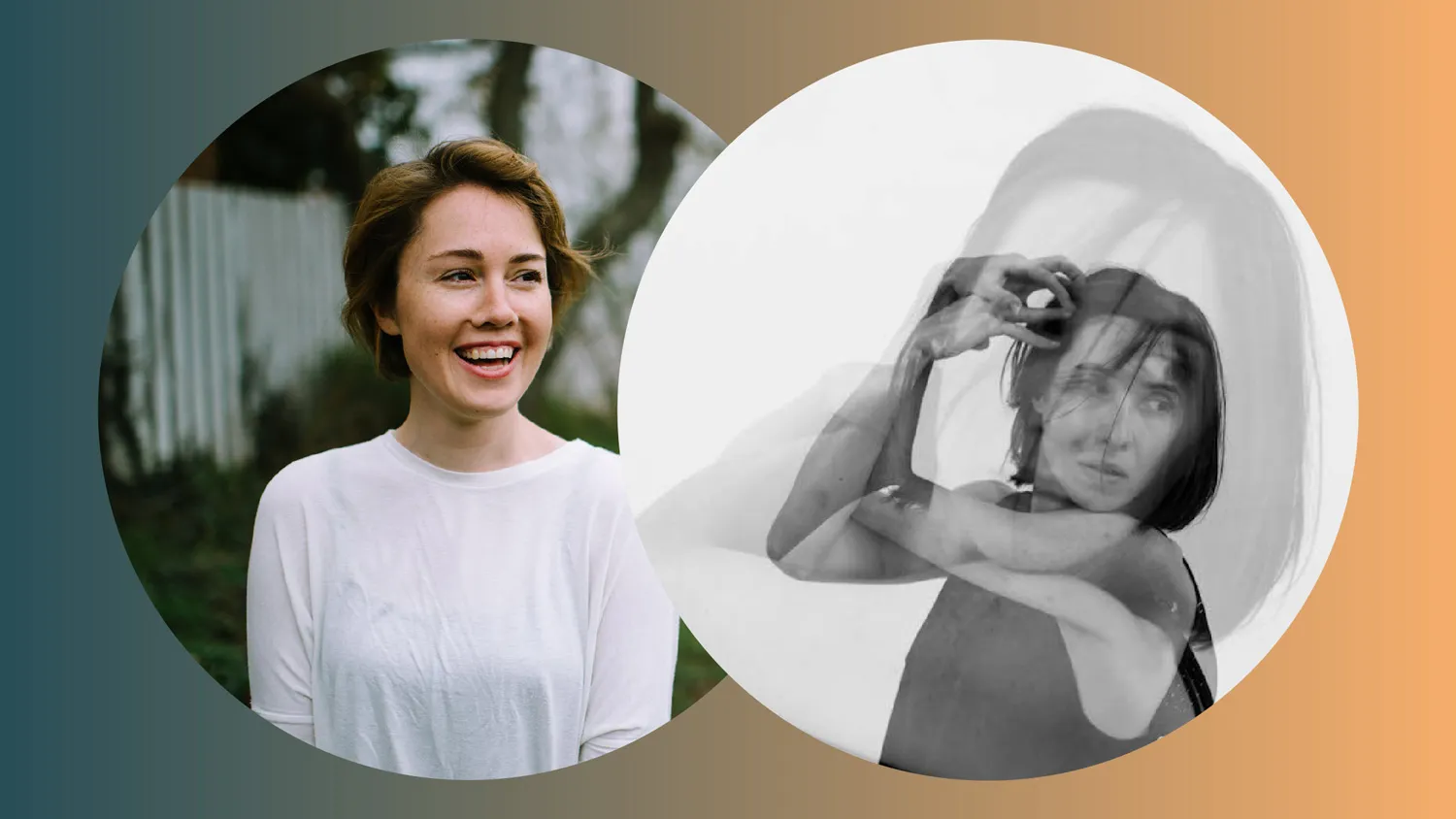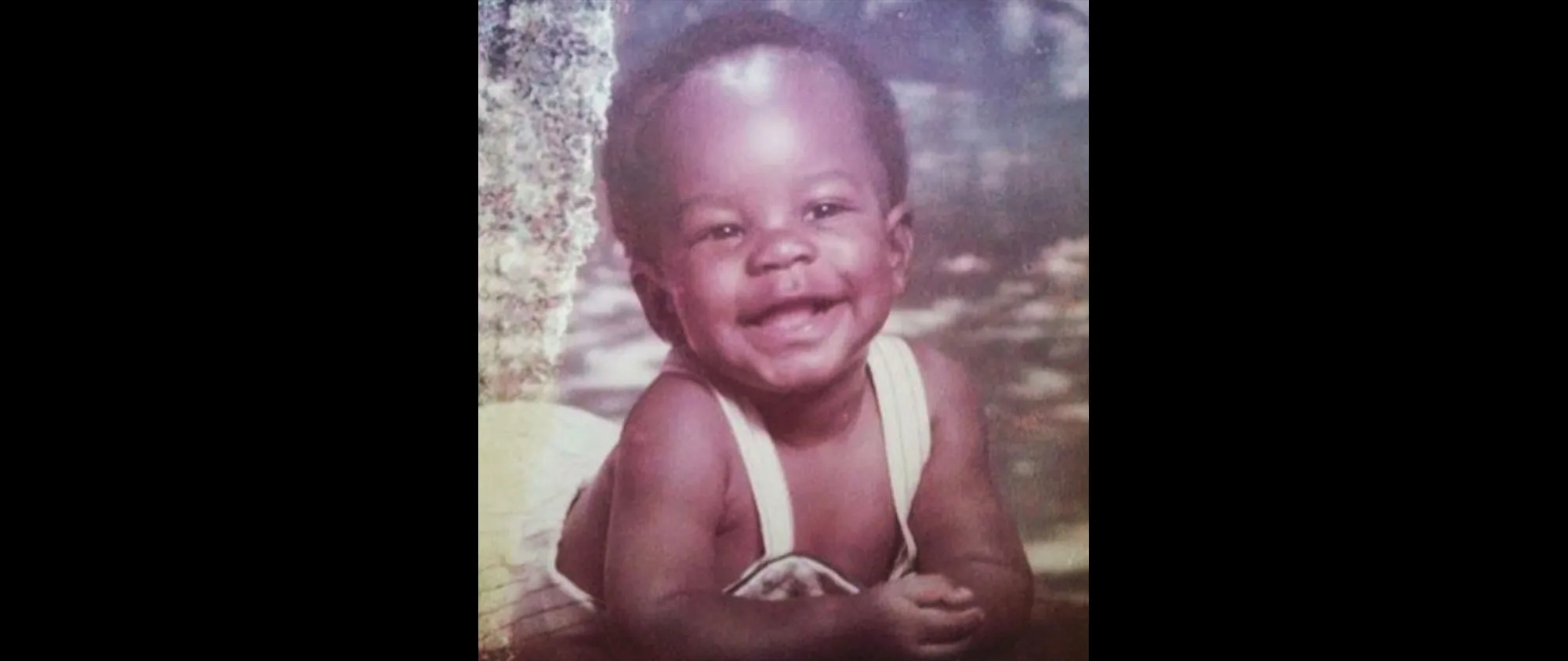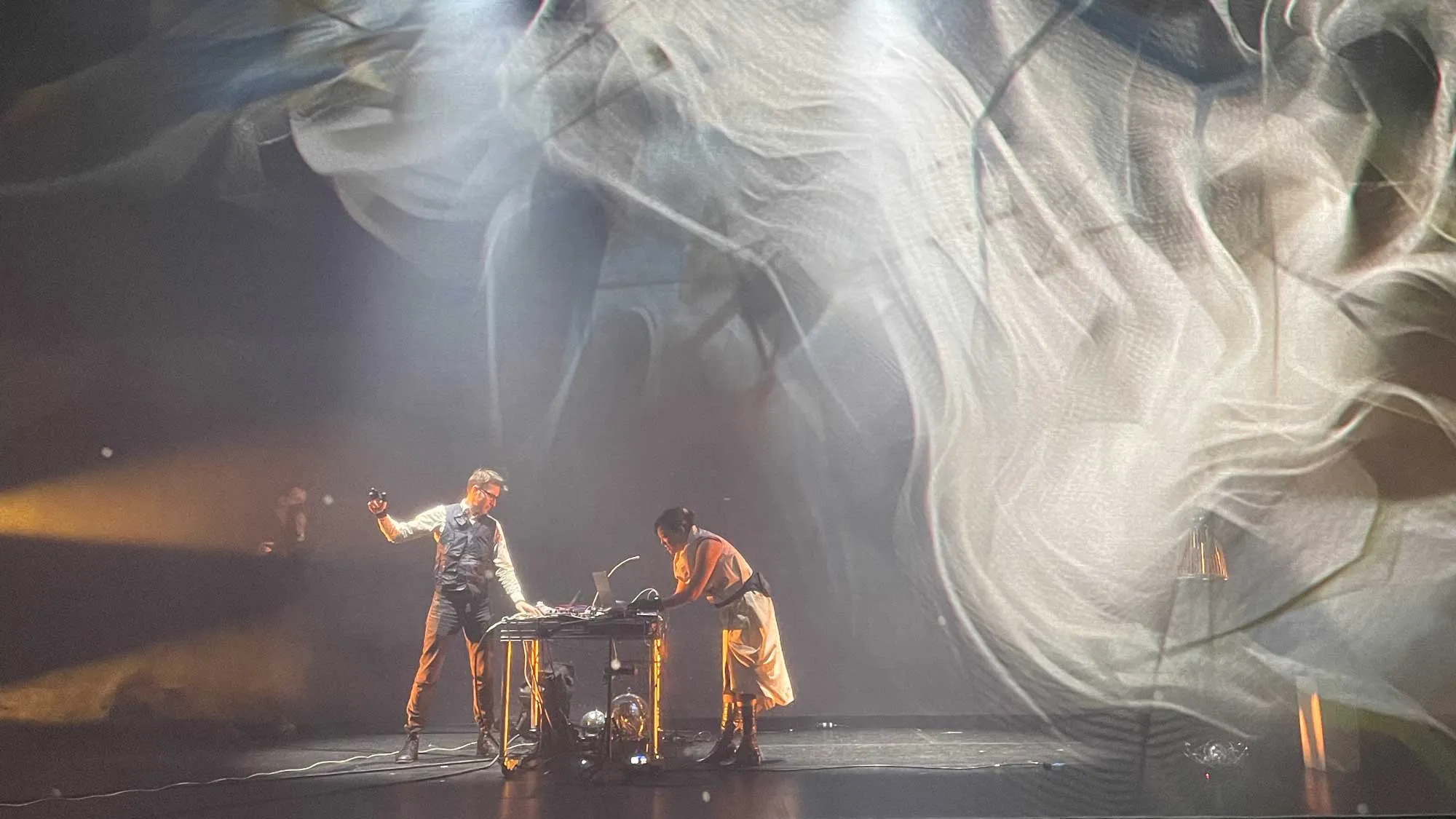Theater maker Annie Saunders collaborates with theater/pop/new music band Wild Up and composer Emma O’Halloran on a new work called Rest. The work engages an audience with simple guidance on how to interact with each other and the performance space. Overall, Rest interrogates sensory overwhelm, sensory deprivation, hallucinations and the nature of consciousness. The audience experience is inspired by the idea that our perception of reality depends on agreements and disagreements with other people.
Light and sound are central to the staging of Rest. These elements help to sculpt a performance environment that includes moments of near-silence, music, and field recordings from a diverse set of conversations. Materials include conversations with consciousness experts, people sharing their early sense memories, and reflections on our relationships to our smartphones. The work provides a visceral opportunity to feel and consider what ‘rest’ means to us in the modern world.
The artistic collaborators are in remote residence this fall to develop an EMPAC-commissioned online iteration of Rest. The commission will provide the artists an opportunity to explore their archive of material. The outcome is unknown, but the process of building and experiencing this online work will provide a look inside immersive, multidisciplinary theatrical practices.
The commissioned work will premiere in January 2021. Join us on December 3, 2020 for a conversations with the artists who will discuss the making of the work.
Listen now on
Anchor.fm,
Breaker,
Apple Podcasts,
Pocket Casts,
RadioPublic,
Spotify,
Castbox,
and Tunein.
Main Image: Courtesy the Artist. Photo: Annie Saunders







